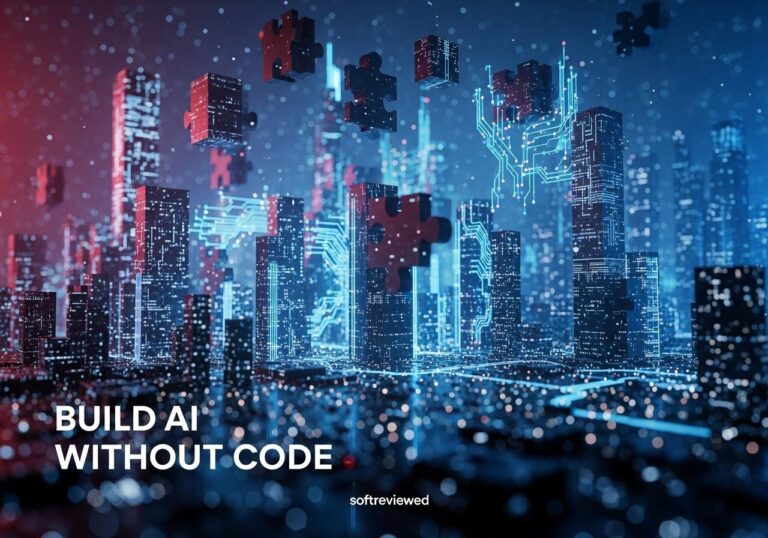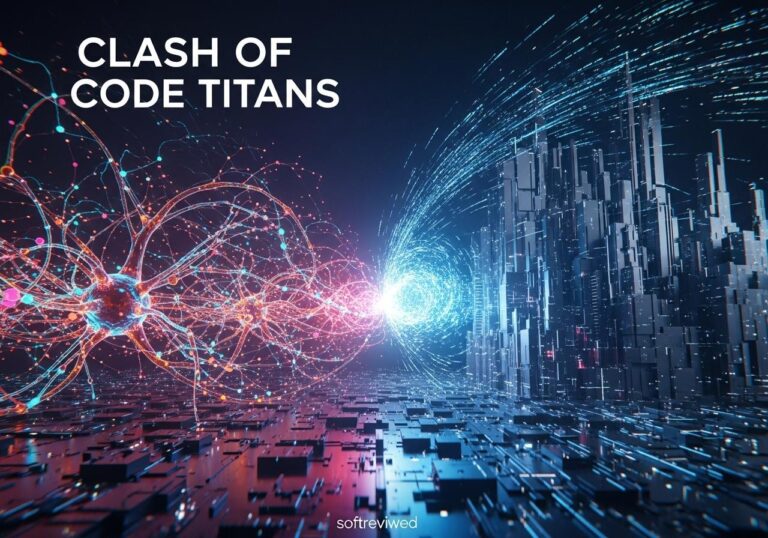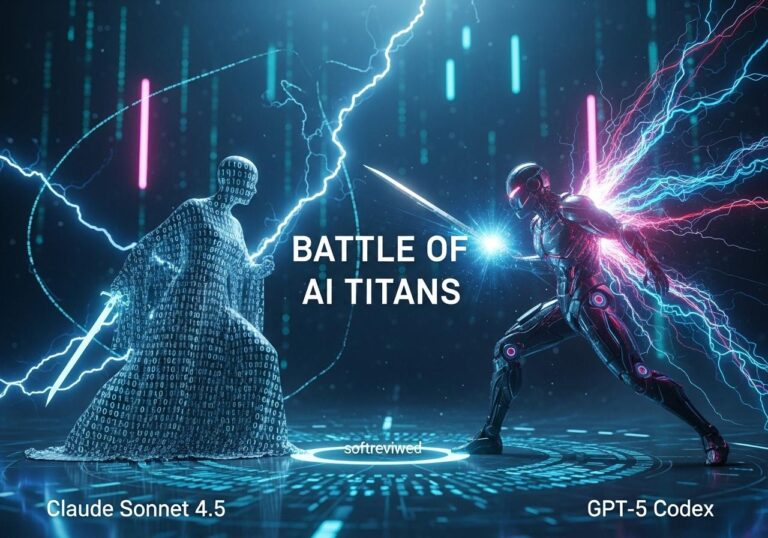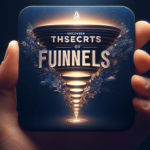Amazon Nova: Next-Gen AI Performance
Revolutionary AI models delivering superior performance, cost efficiency, and multimodal capabilities
Performance Leadership
Nova Pro outperforms GPT-4o on 17/20 benchmarks and Gemini 1.5 Pro on 16/21 benchmarks. Nova Micro surpasses LLaMa 3.1 and Gemini 1.5 Flash consistently.
Cost Efficiency
Up to 75% cost reduction compared to competitors. Nova Micro: $0.04/M input tokens vs GPT-4o mini’s $0.15/M, and $0.14/M vs $0.60/M for output tokens.
Multimodal Capabilities
Supports video and image inputs. Specialized models include Nova Canvas for image creation and Nova Reel for video generation.
Speed & Performance
Nova Micro: 210 tokens/second vs GPT-4o mini’s 85.2 tokens/second. Nova Pro offers 2x faster latency performance than GPT-4o.
Language & Safety
Supports 200+ languages with built-in watermarking and moderation tools for responsible AI use.
The AI landscape is constantly evolving, and a new contender has emerged: Amazon Nova. This article will dive into the details of Amazon's new family of AI foundation models, comparing them directly with the well-established ChatGPT. We'll explore how Amazon Nova stacks up, examining its core capabilities, various models, and potential impact. We will compare strengths, limitations, and real-world applications to assess whether Amazon Nova has the potential to become a new leader in the AI space.
Introducing Amazon Nova: A New Family of AI Foundation Models
Amazon Nova represents a significant leap in Amazon’s AI strategy. Announced in December 2024, Amazon Nova isn’t a single model but rather a family of foundation models designed to provide a wide array of capabilities and cater to different use cases. Unlike earlier approaches that relied heavily on third-party models, Amazon is now directly competing with companies like OpenAI, Google, and Anthropic by offering its own powerful AI models. These models are designed to help make generative AI development faster and more cost-efficient. The models are offered through Amazon Bedrock, a fully managed service for building and scaling generative AI applications.
The Power Behind Amazon Nova: Understanding the Technology
Amazon Nova models are trained on massive datasets and leverage deep learning architectures, similar to other leading foundation models, such as those used by ChatGPT. These models are designed to process diverse data types, such as text, images, and videos, and are capable of performing a wide range of tasks. Amazon also uses its own custom Trainium chips for training the Nova models and Inferentia chips for inference. This allows Amazon to have more control over the costs and performance of its models.
Multimodal Capabilities
✅ One of the most significant features of Amazon Nova is its multimodal nature. This means that most of the models can accept and process multiple data types, including text, images, and video. This allows the models to understand context better and generate responses that combine different formats. This opens up the possibility for advanced applications such as video analysis, image recognition, and content creation that combines both visual and textual elements.
Customization and Fine-Tuning
📌 Amazon Nova also supports customization through fine-tuning. This feature allows users to adapt the models to their specific needs by training them on their own data. This helps to improve accuracy and relevance for particular applications and enhances its performance with company-specific or niche information.
Cost-Effective Solutions
💰 Amazon is focused on providing cost-effective solutions with the Nova models. The models are designed to optimize for different speed, capability, and operational costs, allowing users to choose the right model for their specific needs and budgets. By focusing on cost-effectiveness, Amazon hopes to make its foundation models accessible to a wider range of users.
Amazon Titan Integration
🔗 It is important to note that Amazon Nova is not entirely separate from Amazon's Titan models. The Titan family are also a series of FMs by Amazon, and the Nova family are designed to work closely with them and integrate with Amazon Bedrock. This means they are part of a larger ecosystem of AI tools within Amazon Web Services. Amazon Titan models offer text, image, and multimodal capabilities, and understanding the relationship of the two model families will help in comparing them effectively.
Amazon Nova Models: A Detailed Overview
The Amazon Nova family is comprised of several models, each designed for specific use cases. They are categorized into two main types: understanding models and content generation models.
Understanding Models
These models are primarily designed for analyzing and understanding data, accepting text, image, and video inputs, and generating text outputs.
Amazon Nova Micro
The Nova Micro is a text-only model, and designed for applications that need quick and efficient language understanding, code completion, and mathematical problem solving. It has the lowest latency and cost of the Nova models, with a generation speed of over 200 tokens per second.
Amazon Nova Lite
The Amazon Nova Lite is a multimodal model focused on low-cost, high-speed processing of text, image, and video inputs. It is suitable for interactive, high-volume applications.
Amazon Nova Pro
The Nova Pro is a highly capable multimodal model that balances accuracy, speed, and cost. It is suitable for a wide range of complex tasks. This is also the model that often used in direct comparisons with ChatGPT-4o or similar models from other vendors.
Amazon Nova Premier
The Amazon Nova Premier is the most powerful model in the family, designed for complex reasoning tasks. This model is expected to be released in the first quarter of 2025.
Content Generation Models
These models are designed for creating new visual content, such as images and videos, accepting text and image inputs.
Amazon Nova Canvas
Amazon Nova Canvas is a model designed for generating high-quality images from text and image inputs. It allows for customizable visual content.
Amazon Nova Reel
Amazon Nova Reel is a video generation model, designed for generating videos from text and image inputs, with natural language controls for styles, pacing, and camera motion.
ChatGPT: A Look at the Established Leader

ChatGPT, developed by OpenAI, has become a benchmark in AI chatbots and language models. It is known for its strong capabilities in text generation and conversational AI.
ChatGPT's Strengths
- Advanced Natural Language Processing: ChatGPT excels at understanding and generating human-like text, making it effective in many tasks.
- Versatility: It is used for a variety of applications such as writing, coding, and answering questions.
- Large User Base: ChatGPT has a very large user base, and its API and integration with other products has made it widespread across platforms.
ChatGPT's Limitations
- Focus on Text: Primarily focuses on text outputs. It lacks built-in video generation capabilities, and its image generation is somewhat limited in the basic version.
- Potential Inaccuracies: It sometimes produces inaccurate factual information, requiring fact checking.
- Contextual Memory: While it can remember some context, it can lose context in longer and more complex conversations.
Amazon Nova vs. ChatGPT: A Comparative Analysis
Now let’s delve into a direct comparison of Amazon Nova and ChatGPT.
Feature Comparison
| Feature | Amazon Nova | ChatGPT |
|---|---|---|
| Underlying Models | A family of specialized models including Micro, Lite, Pro, Premier (understanding); Canvas and Reel (content generation); and also the Titan FMs | GPT-3.5, GPT-4, GPT-4o |
| Multimodal Support | Broad support across various models; text, image, video input and output for many models | Limited built-in multimodal support, with some text, and image capability via plugin/API |
| Customization | Supports fine-tuning and distillation with proprietary data on Amazon Bedrock | Fine-tuning options are available via API; model customisation using plugins. |
| Cost-Effectiveness | Designed to be cost-effective with options for different performance tiers | Standardized pricing structure for API access |
| Integration | Seamless integration with AWS services through Bedrock; integration with Amazon Titan models | Primarily accessible through OpenAI's API and some platform integrations |
| Video Generation | Dedicated video generation model (Nova Reel) | No direct built-in video generation functionality |
Performance and Benchmarks
While specific benchmarks may vary, Amazon has stated that its Nova Pro model is competitive with models such as GPT-4o and Claude 3.5 Sonnet. Independent assessments are still emerging, and are showing mixed results. However, it is important to consider that Amazon is continuing to improve its models, and will be releasing even more advanced models during 2025, such as the Nova Premier.
Real-World Applications
- Document Analysis: Amazon Nova models, particularly the understanding models, excel at analyzing complex documents, charts, and diagrams.
- Content Creation: Both platforms enable content creation; however, Amazon Nova’s built-in image and video generation capabilities provide a stronger advantage for visual tasks.
- Customer Service: Both can be used for customer support via chatbots, but Amazon’s platform allows for more fine-tuning to meet specific business requirements.
- E-commerce Applications: Amazon is specifically integrating Nova into features like "Rufus" in their shopping app to provide enhanced product information.
Where Does Amazon Nova Shine?
Amazon Nova sets itself apart with a few key advantages:
- Multimodal Prowess: The broad native multimodal capabilities of Amazon Nova, handling text, images, and videos, provide an edge in applications requiring diverse data inputs.
- Customization: The fine-tuning capabilities of Amazon Nova on Amazon Bedrock give businesses greater flexibility in tailoring the models for niche or proprietary uses.
- Cost-Effectiveness: Designed with cost optimization in mind, Nova presents a potentially more budget-friendly option for businesses operating within the AWS ecosystem.
- Integration with AWS: Amazon Nova is designed to integrate smoothly with the existing AWS services and Amazon Titan models.
The Implications of Amazon Nova
The introduction of Amazon Nova has several significant implications:
- Increased Competition: Amazon's entrance into the foundation model space increases competition, potentially leading to faster innovation and better value for consumers.
- Cloud Ecosystem Integration: The close integration with AWS means Amazon Nova has the potential to be a major force for companies already using Amazon's cloud services.
- New Possibilities: The multimodal capabilities of Amazon Nova open up a whole host of potential uses that go beyond simple text-based interactions.
Is YouTube’s AI Shift Impacting Amazon Nova’s Position in the AI Landscape?
YouTube’s AI shift is revolutionizing content creation, with youtube creators empowering their future with ai. As these innovators leverage advanced tools to enhance engagement, Amazon Nova faces pressure to evolve. The competition intensifies as platforms vie for dominance in the ever-growing AI landscape, challenging established players and redefining industry standards.
Navigating the Future of AI with Amazon Nova
Amazon Nova is a significant development in the AI landscape. Its range of models and its capabilities highlight Amazon’s commitment to advancing AI technology. While ChatGPT continues to be a powerful tool, the unique features and capabilities of Amazon Nova mean it is certainly a contender worth considering, especially for businesses using Amazon Web Services and requiring multimodal or more complex functionality. As AI continues to rapidly evolve, Amazon Nova and similar innovations will shape the future of AI and drive further advancements and integration of AI technology into everyday life. You can explore the Amazon Nova models and Amazon Bedrock on the official AWS website.
Amazon Nova Models Performance Comparison
This chart compares key performance metrics of Amazon Nova models against competitors, showing relative cost efficiency and performance benchmarks.







